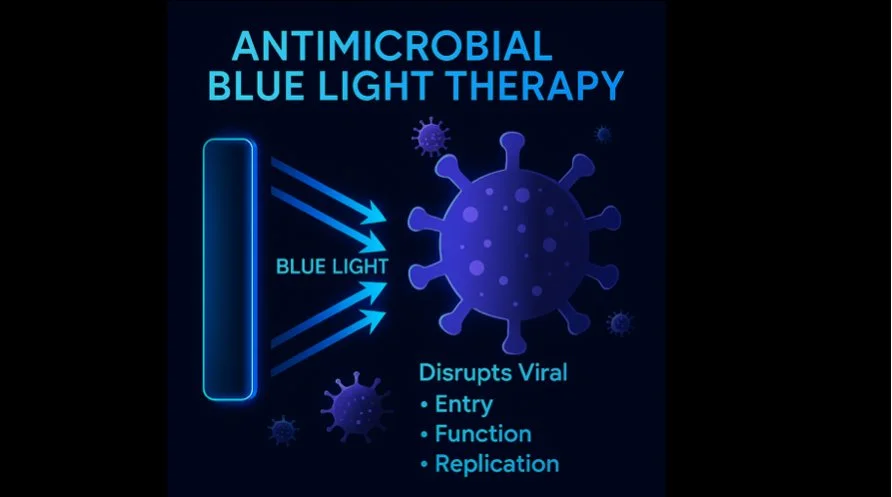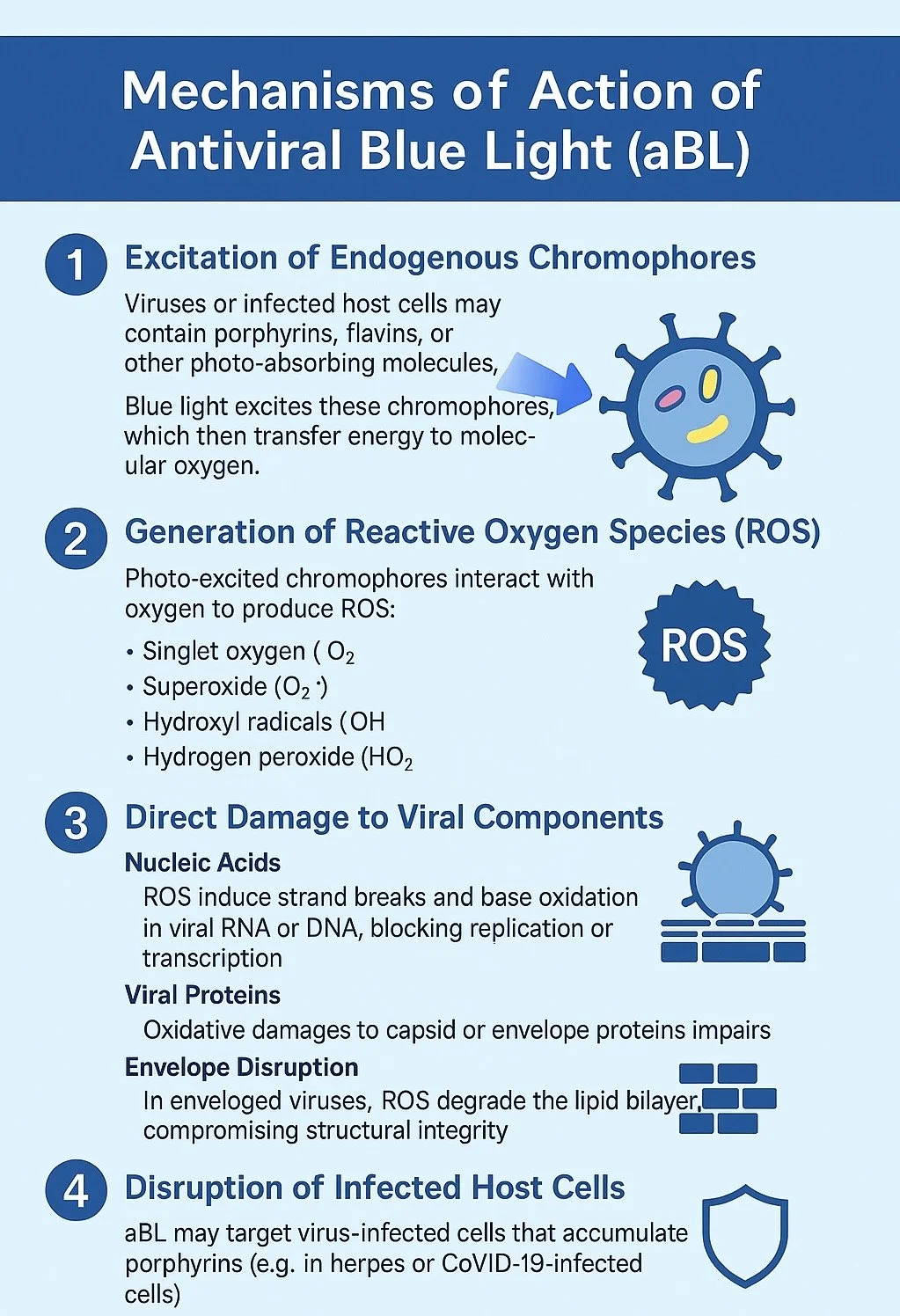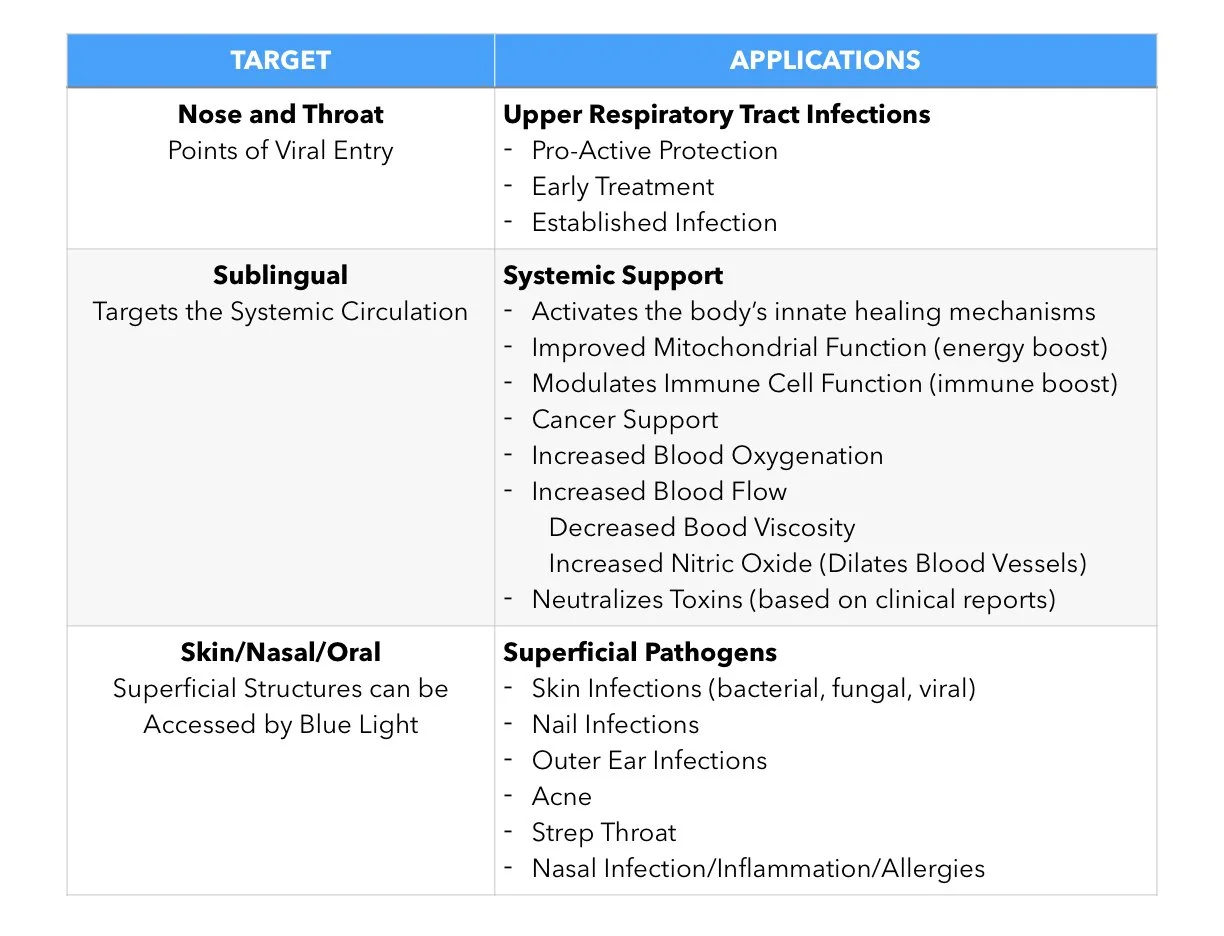Antimicrobial Blue Light Targets Viral Infections
Antimicrobial blue light (aBL) therapy is an innovative, drug-free approach that uses specific wavelengths of light (typically 405–470 nm) to inactivate a wide variety of infectious agents including bacteria, fungi and viruses. Enveloped viruses like CoVID-19 are particularly susceptible to aBL:
How aBL Works
In addition to directly targeting microbes, aBL helps prime the innate immune system, which serves as the body’s initial barrier against infection.
Direct Attack on Viruses
Like photodynamic therapy (PDT), antimicrobial blue light (aBL) eliminates infectious agents by generating reactive oxygen species (ROS). PDT achieves this by applying an external photosensitizer and activating it with light of a specific wavelength. In contrast, aBL relies on activating natural, endogenous photosensitizers produced by the pathogen itself. The resulting ROS act quickly and at multiple levels to interfere with viral entry, function, and replication. Furthermore, antimicrobial resistance has not been observed with aBL or PDT, likely due to the rapid and multi-targeted action of ROS in eliminating pathogens.
Enhanced Immune Response
In addition to its direct antimicrobial effects, aBL helps prime the innate immune system. The innate immune system is the body’s first and fastest line of defense against viral and other infections. It acts within minutes to recognize and attack pathogens, limiting their spread and buying time for the adaptive immune system to respond - if at all needed. A strong innate response is critical for preventing severe illness and ensuring effective recovery.
Why It Matters
Emerging CoVID-19 variants have developed greater resistance to antibody-based defenses, while additional mutations have suppressed key innate immune responses, including interferon production. Antimicrobial blue light (aBL) remains effective against all CoVID-19 variants and other viruses, and can help restore and enhance weakened innate immunity.
Treatment Options
1. Local aBL Treatment
Blue light is applied to the nose, mouth, and over closed eyes to reduce the chance or severity of infection by lowering the viral load at points of entry.
2. Sublingual Blue Light
Delivering light under the tongue targets the rich network of blood vessels in this area, enabling enhanced light absorption and systemic (whole-body) effects. This approach is referred to as sublingual photobiomodulation (PBM) and is especially useful for more advanced infections. It can also serve as a standalone therapy to enhance immune function, reduce systemic inflammation, and accelerate recovery of acute and chronic illnesses.
3. In Combination with Red Light Therapy
aBL can be combined with red light therapy, referred to as photobiomodulation. These two wavelengths act synergistically to boost mitochondrial enzymes—an essential system responsible for generating the energy that powers nearly all cellular functions.
4. In Combination with a Photosensitizer
aBL can be combined with oral riboflavin (vitamin B2) for enhanced antiviral effects (Photodynamic Therapy).
Advantages of aBL
Although its effects can be enhanced with the addition of a photosensitizer, the beauty of this approach is that it can be used as a standalone treatment without the need to source other treatment supplies:
How to Use the Luminnova Blue LED Device
The Luminnova BLUE probe was designed as a preventative measure and to support treatment of both early and established COVID-19 infection. However it also offers a wide range of additional health applications.
A comprehensive treatment guide will be provided. For optimal response in targeting CoVID-19, begin treatment as soon as possible after potential viral exposure.
QUESTIONS?
Contact Luminnova Health for more information or to order your device and instruction guide.





